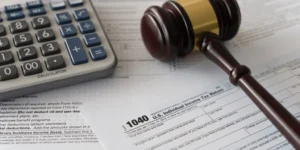How to Build a Legal Timeline for Effective Case Chronology

A legal timeline is essentially a structured sequence of events that outlines dates, evidence, actions, and facts in the exact order in which they occurred. Think of it as a roadmap that guides the entire legal process from beginning to end and legal timeline software will provide a prudent solution.
Without a carefully prepared chronology, paralegals and legal teams risk overlooking crucial details and missing insights that attorneys rely on to prepare for trial and secure favorable outcomes.
In this article, we’ll explore why a detailed case timeline is indispensable, the steps to build one, and practical tips to ensure your chronology is clear, persuasive, and complete. A strong legal timeline empowers every member of the team with the facts they need.
Why Is a Legal Timeline Necessary?
Creating a chronology of events is vital for case management and strategy. Timelines not only establish a clear overview of the order of events but also reveal the progression of a client’s situation. By organizing facts in a structured sequence, attorneys can better understand how circumstances developed and where pivotal turning points lie.
Legal timelines are particularly important in cases that involve complex records or evidence. They illustrate how details evolve over time and make it possible to demonstrate connections between incidents and outcomes. Timelines can also transform a complicated case into a narrative that is easy to follow, making it clearer for both attorneys and clients.
A well-crafted timeline improves clarity, identifies inconsistencies, and highlights patterns that might otherwise go unnoticed. It is not just an organizational tool but also a persuasive way to tell the story of a case. By aligning facts in order, legal teams can build stronger strategies, prepare witnesses effectively, and communicate the case narrative with confidence.
Step 1: Start Early
The earlier you begin building a timeline, the more accurate and thorough it will be. Waiting until the trial phase to piece everything together can leave important details overlooked or forgotten. As soon as a case begins, start collecting information about the key events and parties involved.
Early preparation ensures you capture every piece of evidence as it becomes available. Over time, the timeline evolves into a comprehensive framework that connects facts seamlessly. Starting early also reduces stress and helps your legal team stay ahead of deadlines and trial preparations.
Step 2: Identify Key Parties and Evidence
A strong legal timeline requires identifying all parties connected to the case. This includes clients, witnesses, defendants, organizations, or any entity whose role influences the outcome. Clearly outlining each party helps establish a foundation for building the sequence of events.
Once the parties are identified, evidence must be gathered to support the timeline. The type of evidence depends on the nature of the case, whether medical records, witness statements, or official reports. Properly connecting evidence to the individuals involved creates a more credible and defensible chronology.
Step 3: Gather and Organize Information
After identifying the main events and parties, the next step is to collect all related documentation. This can include records, messages, financial statements, agreements, or multimedia files such as videos and audio recordings. Every piece of evidence contributes to a more complete timeline.
To ensure efficiency, all materials should be stored in a central, organized system. This prevents time wasted searching through scattered files and ensures that every detail can be quickly referenced. A structured system is essential for accuracy and reliability during trial preparation.
Step 4: Build the Timeline Chronologically
Once all information is gathered, it’s time to arrange events in chronological order. Ordering events by date allows legal teams to see the full picture and identify any gaps in the story. This step brings structure to the evidence and ensures clarity when presenting the case.
Chronological arrangement also helps connect facts in a logical flow. By viewing events side by side, it becomes easier to establish cause-and-effect relationships and strengthen the overall case narrative.
Step 5: Choose the Right Timeline Format
The format of a timeline depends on the complexity of the case and how the information will be presented. A linear format works well for straightforward cases, while a chart or visual display may be more effective for cases involving multiple parties or overlapping events.
An interactive format can also be useful, especially when presenting digitally. Choosing the right format ensures that your timeline communicates the story of the case in the clearest and most persuasive way possible.
Step 6: Review for Accuracy
Before finalizing, it is crucial to verify every date, time, and piece of evidence included in the timeline. Accuracy is essential, as even minor errors can undermine the credibility of a case. Mistakes not only create confusion but can also carry serious legal consequences.
Careful review ensures that the chronology is both reliable and professional. Double-checking the information minimizes the risk of oversight and guarantees that attorneys have a solid foundation for trial preparation.
Step 7: Present with Clarity
When presenting a legal timeline, clarity is just as important as accuracy. The timeline should highlight who was involved, what happened, when events occurred, and where they took place. Presenting it as a story helps legal teams and clients alike grasp the key moments that shape the case.
A clear and compelling presentation of the timeline supports stronger arguments in court. It transforms complex facts into a narrative that judges, juries, and all parties can follow with ease.
Advanced Tips for Stronger Case Chronologies
Improving your legal timeline involves more than just gathering information. Using consistent formatting, focusing on specific and essential details, and creating standardized templates can make timelines easier to build and present. Consistency across timelines also improves collaboration within legal teams.
Leveraging digital tools can save significant time and effort. Software designed for organizing and analyzing case documents allows for more efficient management and ensures that details are never overlooked. These tools can help detect patterns and highlight inconsistencies that strengthen case arguments.
Common Mistakes to Avoid
One of the most common errors is failing to update the timeline regularly. As new information emerges, it must be added immediately to maintain accuracy. Delayed updates risk leaving out crucial details.
Another mistake is overloading the timeline with unnecessary details. While all evidence should be collected, the timeline itself should focus on the most relevant information. Presenting too many minor details can overwhelm and distract from the main case narrative.
Further Resources for Legal Timelines
For those seeking to refine their timeline-building process, various resources such as templates, design platforms, and case management tools can help streamline creation and presentation. These resources provide practical ways to enhance efficiency and professionalism.
Whether you are creating a simple linear timeline or a dynamic interactive one, having the right resources can elevate the quality of your presentation. Choosing tools that suit your case type ensures that your chronology is both clear and persuasive.
Build Strong Legal Timelines with Confidence
Behind every successful case lies a well-prepared legal timeline. A strong chronology provides the structure and clarity necessary to present facts effectively and guide attorneys in building their strategy. Paralegals play a crucial role in assembling these details and ensuring the timeline represents the full scope of the case.
By combining accuracy, organization, and clear presentation, legal teams can build timelines that not only keep cases on track but also enhance persuasiveness in court. Using the right approach and tools ensures every detail contributes to a compelling story that strengthens the path toward success.





